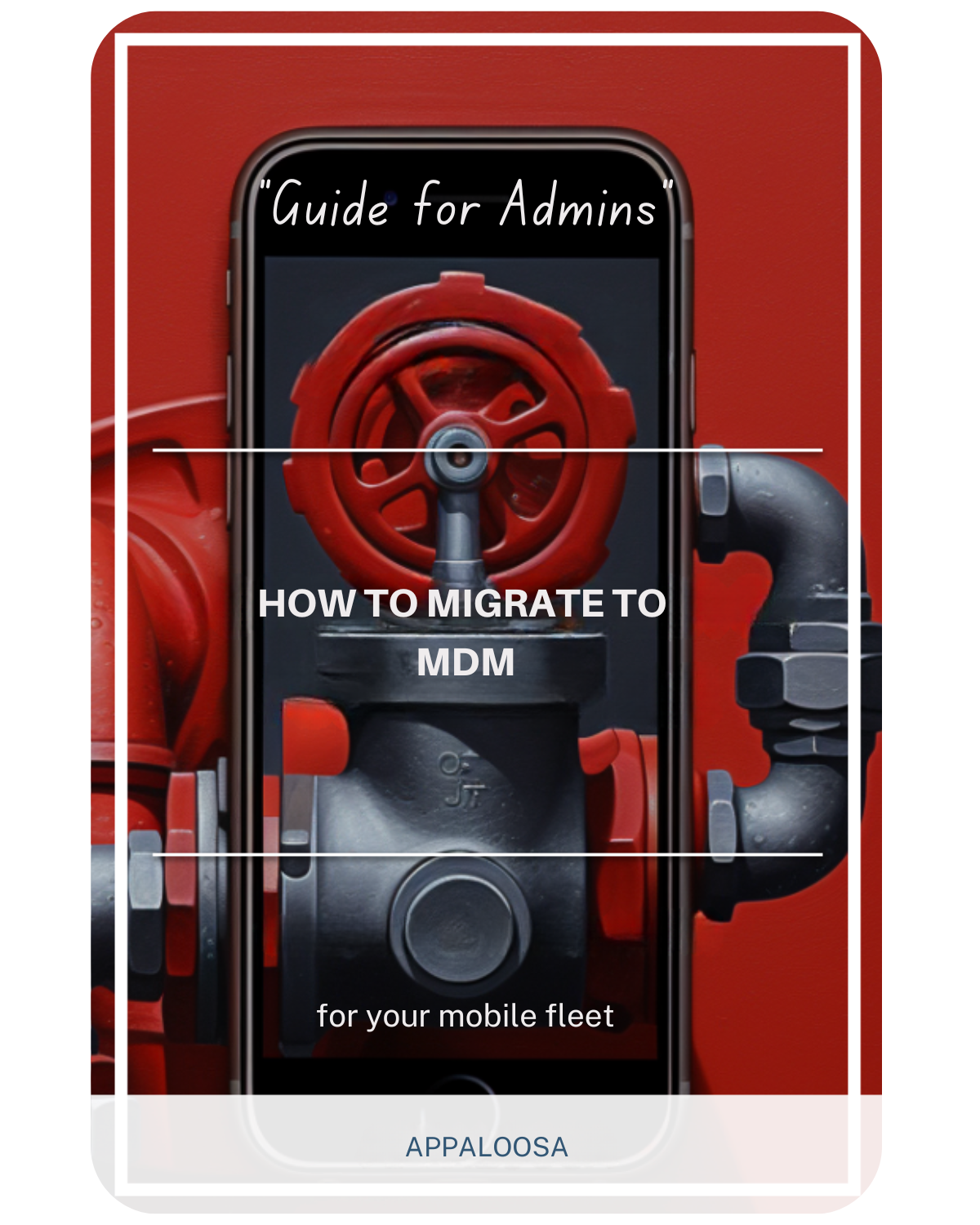Demystifying EMM: A Comprehensive Guide to BYOD, MDM, and Zero-Touch

In today's digital workplace, managing mobile devices has become crucial for organizational success. Enterprise Mobility Management (EMM) represents a comprehensive solution EMM approach that helps businesses streamline device usage, enhance productivity, and ensure data protection.
As organizations navigate the complexities of mobile device management, understanding the various acronyms and strategies—from MDM to MAM to UEM—becomes essential for making informed decisions, especially in bring your own device scenarios.
Understanding the Core Concepts
Enterprise Mobility Management (EMM) serves as the umbrella term for comprehensive mobile management strategies. This hardware-agnostic approach gives organizations the ability to remotely manage software, configure devices, control mobile content management, and enforce security measures across their entire mobile fleet.
Mobile Device Management (MDM) provides IT teams with essential gestion MDM capabilities through specialized MDM software to enroll, track, and manage devices.
Whether dealing with corporate-issued devices or BYOD environments, MDM enables administrators to deploy applications, push policies, and maintain role-based profiles.
For Android devices specifically, knowing how to install APK for Android becomes crucial when deploying enterprise applications outside the Google Play Store.
Mobile Application Management (MAM) takes a more focused approach, concentrating on securing enterprise applications and data without necessarily controlling the entire device.
This makes it ideal for BYOD MDM solutions where personal information privacy must be balanced with corporate security needs.
Unified Endpoint Management (UEM) extends management device mobile capabilities beyond smartphones and tablets to include desktops, laptops, and IoT devices, providing a single pane of glass for all endpoint management needs.
Step-by-Step Implementation Guide
1. Assessment and Planning
Before implementing any EMM solution, organizations must thoroughly assess their mobility requirements. Consider your current device landscape, security needs, and future scalability requirements.
Understanding the latest trends in mobile management helps ensure your solution remains relevant, particularly in bring your own device programs.
2. Solution Evaluation
Research various EMM providers and their MDM software offerings, focusing on:
- Security measures and compliance capabilities
- Platform compatibility (iOS, Android, Windows)
- Scalability for future growth
- User experiences and ease of adoption
- Manager app functionality and features
3. Deployment Strategy
Create a detailed implementation plan that addresses:
- Device enrollment procedures for both corporate and BYOD environments
- Policy configuration for content management mobile
- Application deployment methods (including how to add APK to Android devices for custom apps)
- Training requirements for IT staff and end users
4. Rollout and Monitoring
Deploy your EMM solution in phases:
- Start with a pilot group
- Test the manager app functionality thoroughly
- Gather feedback and adjust configurations
- Gradually expand to all users
- Continuously monitor performance and security metrics
Security and Compliance Considerations
Modern EMM solutions must address evolving security threat landscapes while maintaining user productivity and protecting personal information. Key security features include:
Remote Wipe Capabilities: The ability to perform remote wipe operations protects sensitive corporate data if a device is lost, stolen, or when an employee leaves the organization. This critical feature ensures data protection even in worst-case scenarios, while respecting personal information in BYOD scenarios.
Encryption and Access Control: Implementing robust encryption for data at rest and in transit, combined with role-based access controls, creates multiple layers of security for both corporate data and mobile content management.
Compliance Management: The latest EMM solutions offer detailed reporting and analytics to maintain compliance with industry regulations like GDPR, HIPAA, or SOC 2, ensuring proper handling of both corporate and personal information.
Managing Different Device Types

Corporate-Owned Devices
For company-issued devices, organizations can implement stricter controls through MDM software:
- Full device management
- Mandatory security policies
- Complete application control beyond the Google Play Store
- Restricted personal use
BYOD Scenarios
BYOD MDM solutions in bring your own device programs require a more nuanced approach:
- Containerization to separate personal information and work data
- Selective wipe capabilities that preserve personal content
- Privacy-respecting policies
- Clear communication about what is monitored
- Separate work profiles managed by the manager app
Rugged and Specialized Devices
Industries like retail, healthcare, and logistics often use rugged devices that require specialized management:
- Custom launcher applications
- Kiosk mode configurations
- Battery optimization
- Shared device support in BYOD environments
Application Management Best Practices
Effective application management forms the cornerstone of any EMM strategy.
Understanding how to install APK Android files securely becomes crucial when deploying custom enterprise applications outside the Google Play Store.
Secure App Distribution
Organizations must establish secure channels for application distribution:
- Enterprise app stores as alternatives to the public Google Play Store
- Controlled deployment of custom APKs through the manager app
- Version management and update protocols
- License tracking and compliance
- Mobile content management integration
Content Management
Mobile content management capabilities ensure secure document access:
- Encrypted file storage protecting both corporate and personal information
- Controlled sharing permissions
- Document tracking and auditing
- Integration with cloud storage services
- Separation of personal and work content in BYOD environments
Common Pitfalls to Avoid
Ignoring User Experience
Poor user experiences can derail even the best EMM implementation. Ensure your MDM software solution:
- Minimizes login requirements in the manager app
- Provides intuitive interfaces
- Maintains device performance
- Respects user privacy and personal information in BYOD scenarios
Underestimating Security Requirements
Don't wait for a security threat to expose vulnerabilities:
- Regularly update security policies in your MDM software
- Conduct security audits of BYOD environments
- Train users on security best practices
- Implement multi-factor authentication
- Monitor app installations beyond the Google Play Store
Overlooking Scalability
Choose solutions that can grow with your organization:
- Cloud-based architectures for flexibility
- Modular features that can be added as needed
- Strong vendor support and regular updates
- Clear upgrade paths for bring your own device programs
Choosing the Right EMM Solution
When evaluating EMM providers and their MDM software, consider these factors:
Feature Completeness: Ensure the solution covers all your requirements, from basic MDM to advanced mobile content management capabilities.
Platform Support: Verify compatibility with all device types in your organization, including the latest operating system versions and app distribution beyond the Google Play Store.
Integration Capabilities: Look for solutions that integrate with your existing IT infrastructure, including directory services, help desk systems, and security tools.
Privacy Controls: Especially important for BYOD environments, ensure the solution can properly separate and protect personal information from corporate data.
Total Cost of Ownership: Consider not just licensing costs but also implementation, training, and ongoing management expenses for your bring your own device program.
The Future of Enterprise Mobility
As workplace mobility continues to evolve, EMM solutions must adapt to new challenges:
- Zero-touch enrollment for streamlined device provisioning
- AI-driven security threat detection in manager app functionality
- Enhanced privacy controls for personal information in BYOD scenarios
- Integration with emerging technologies like AR/VR devices
- Advanced mobile content management with AI-powered classification
Conclusion
Enterprise Mobility Management represents a critical investment in organizational efficiency and security. By understanding the various components—from basic gestion MDM to comprehensive UEM platforms—organizations can make informed decisions that balance security needs with user productivity.
Whether you manage a fleet of rugged devices or use BYOD MDM solutions, the key is choosing the right MDM software. Also, implementing it carefully is important.
Success in EMM requires ongoing attention to security measures, regular evaluation of user experiences, and staying current with the latest mobile management trends.
As threats change and new devices come into the workplace, your EMM strategy must stay flexible. It should protect both company data and personal information.
With good planning and management using a well-designed manager app, EMM can change mobile devices. It can turn them from security risks into strong productivity tools. This helps businesses succeed in today's BYOD environments.
